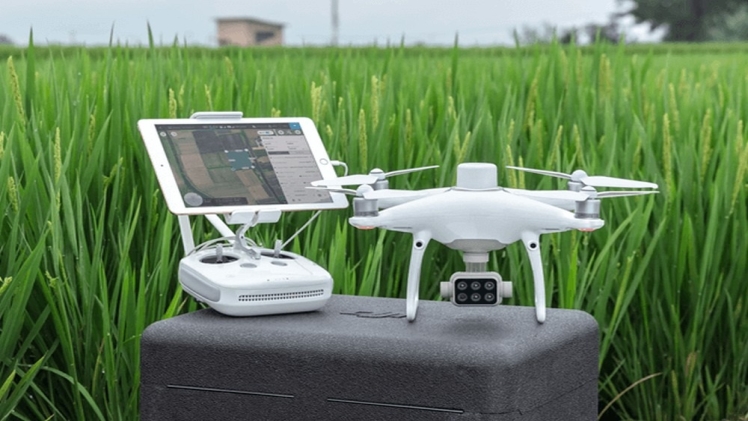In the quest for better agricultural productivity, precision is key, especially when it comes to fertilizer application.
DJI drones, known for their advanced technology, offer valuable insights that can significantly improve the way fertilizers are used in fields.
This article will guide you on how to optimize fertilizer application using data and observations collected by DJI drones.
By understanding and implementing these techniques, farmers can achieve better crop yields, reduce environmental impact, and increase efficiency.
Understanding the Role of DJI Drones in Agriculture
DJI drones are equipped with various sensors and cameras that capture detailed images and data of farmlands. This information is crucial for:
- Assessing Soil Health: Drones can analyze soil conditions, helping to determine the specific fertilizer needs of different field areas.
- Monitoring Crop Growth: Drone imagery can identify areas of the field where crops are underperforming, indicating a need for more nutrients.
- Evaluating Previous Fertilizer Application: They can also assess the effectiveness of previous fertilizer applications and suggest adjustments.
Steps to Optimize Fertilizer Application
1. Conducting Aerial Surveys
Conducting aerial surveys with DJI drones is a crucial step in modern farming. Here’s how it works:
- Regular Flights: Fly your DJI drone over the fields routinely, like once a week.
- Capture Details: The drone takes pictures from above, showing all parts of your crops.
- Spot Differences: You can see where crops are healthy (bright green) and where they need help (dull or patchy).
- Make Notes: Use these photos to note which areas need more water or fertilizer.
- Save Time: This method is much faster than walking through the fields.
2. Analyzing the Data
Analyzing data from DJI drones is crucial for smart farming:
- Use Specialized Software: Agricultural software interprets drone images, showing crop health and soil conditions.
- Spot Differences in Fields: Look for color changes in images. Dark green might mean healthy crops; lighter colors could show areas needing more care.
- Measure Growth: Software can compare images over time, showing how crops are growing.
- Make Smart Decisions: With this data, decide where to water more, or where to use less fertilizer.
- Example: A corn farm used drone data to identify under-fertilized areas, increasing yield by 10% after adjustments.
3. Mapping Fertilizer Needs
Mapping fertilizer needs with DJI drones is a smart step in modern farming. Here’s how it’s done:
- Fly the Drone: First, fly your DJI drone over your fields. The drone takes pictures from above.
- Analyze Images: Use special software to look at these pictures. It shows different colors where crops need more or less food (fertilizer).
- Create a Fertilizer Map: From this, make a map. It tells you exactly where to put more or less fertilizer.
- Tailored to Your Field: This map is special for your field. It helps you use the right amount of fertilizer in the right places.
4. Precision Fertilizer Application
Precision fertilizer application, a crucial step in modern agriculture, involves applying the right amount of fertilizer at the exact location where it’s needed. This method, supported by insights from DJI drones, leads to:
- Enhanced Crop Health: By ensuring specific areas receive the nutrients they require, crop health and yield are improved.
- Reduced Waste and Cost: It limits the overuse of fertilizer, cutting down costs and environmental impact.
- Data-Driven Decisions: Drone data helps in making informed decisions on fertilizer types and quantities.
- Example: In Iowa, corn farmers using precision application saw a 10% increase in yield while reducing fertilizer use by 15%.
Benefits of Using DJI Drones for Fertilizer Optimization
Utilizing DJI drones for fertilizer optimization in agriculture brings several key benefits:
Enhanced Crop Health and Yield:
- DJI agriculture drones from talosdrones.com are equipped with multispectral cameras that can assess crop health from the air.
- They identify areas that need more nutrients, leading to targeted fertilizer application.
- This targeted approach can increase crop yield significantly. For example, a study showed a 10-15% increase in crop yield when fertilizers were applied based on drone data.
Cost-Effective Farming:
- Precise application of fertilizers reduces wastage.
- Farmers can save on fertilizer costs, which can account for a significant portion of the farming budget.
- For instance, a farm in Iowa reduced its fertilizer costs by about 20% using drone insights.
Environmental Sustainability:
- By avoiding over-fertilization, drones help in reducing harmful runoff into nearby water bodies.
- This practice supports sustainable farming and protects local ecosystems.
- A vineyard in France, using drone data, minimized environmental impact by reducing fertilizer use by 25%.
Time and Labor Efficiency:
- Drones cover large areas quickly, saving time compared to manual crop monitoring.
- This efficiency reduces the labor required for field inspection and fertilizer application.
Challenges and Solutions
1. Technical Expertise Required
Solution: Seek training or hire a professional who is skilled in operating drones and interpreting agricultural data.
2. Initial Investment Cost
Solution: Consider the long-term savings and benefits. Also, explore financing options or drone rental services.
3. Data Overload
Solution: Use agricultural software that simplifies data analysis and provides clear recommendations.
Conclusion
DJI drones bring a new level of precision and efficiency to the field of agriculture.
By leveraging the insights they provide, farmers can optimize their fertilizer application, leading to better crop health, higher yields, and more sustainable farming practices.
As technology continues to advance, the integration of drones into farming routines is not just a trend, but a smart strategy for future success.
This comprehensive guide aims to provide a clear understanding of how to use DJI drones to optimize fertilizer application in fields.
By following these steps farmers and agricultural professionals can significantly enhance their fertilizer application strategies, leading to more productive and sustainable farming.

